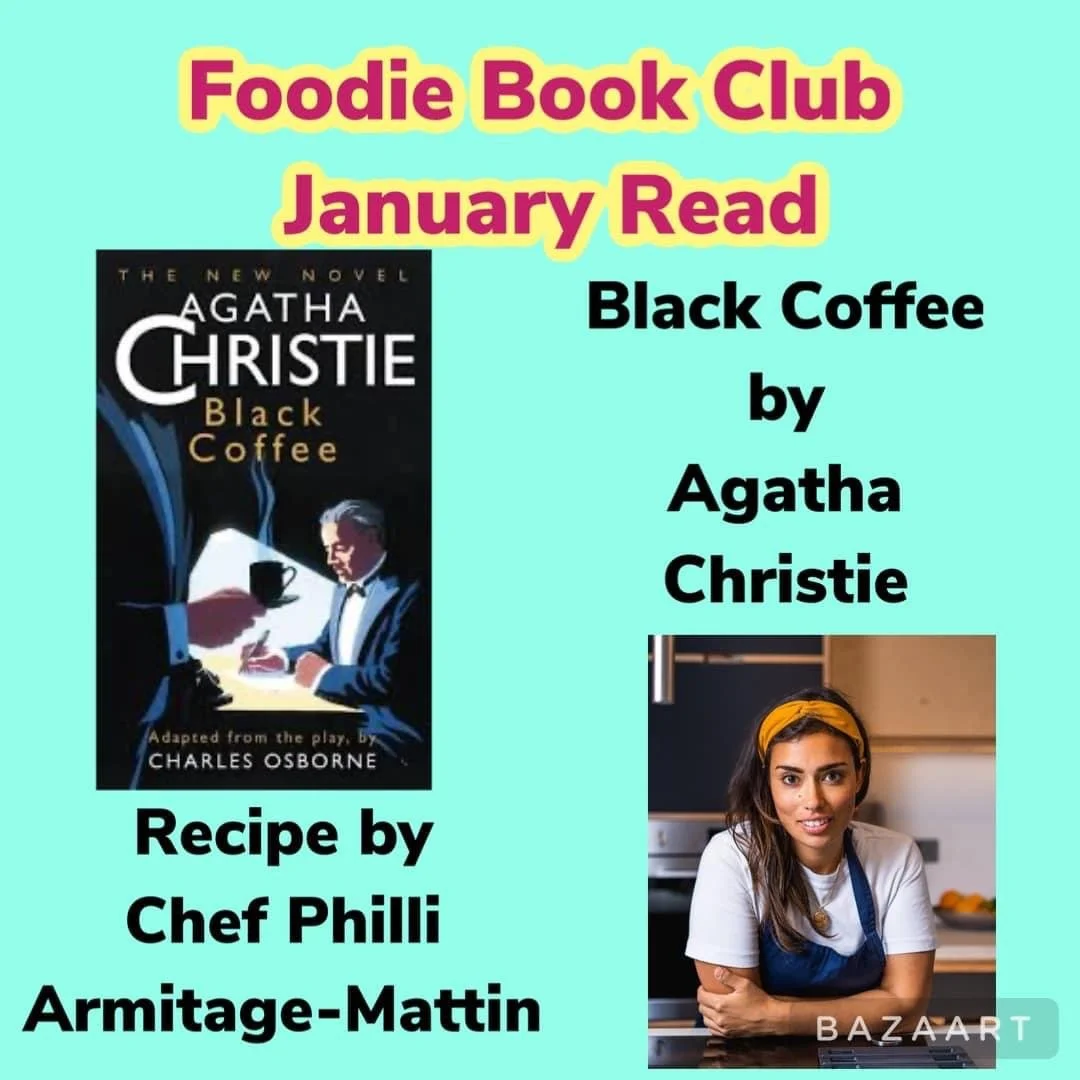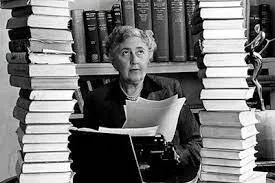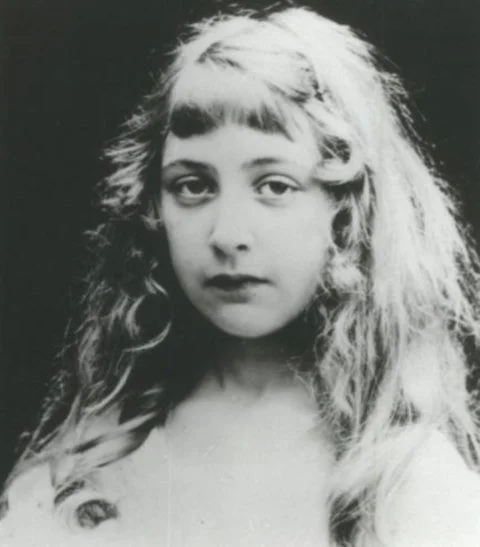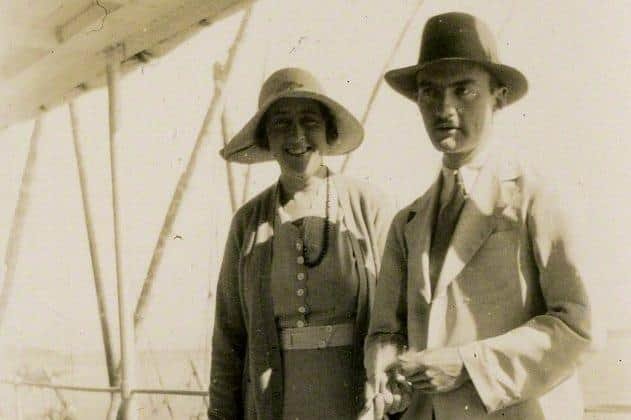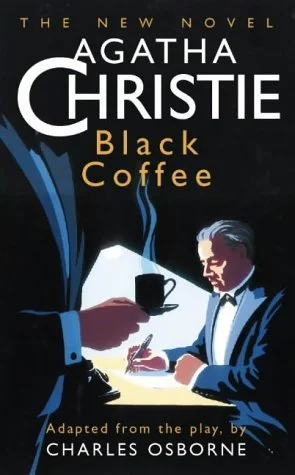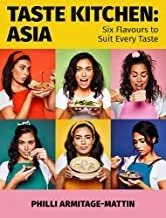Black Coffee by Agatha Christie & Recipe by Chef Philli Armitage-Mattin
I’m not sure I need to write anything about Agatha Christie, but I’m working on the premiss that more is more.
So, all this information is from Agatha Christie website - https://www.agathachristie.com/
I’m ashamed to say that most of what I found there I didn’t know and all of it makes me realise what an extraordinary woman she was and what an eventful and real life she had.
Keep reading to find out everything I’ve learnt, and if there’s more you know that’s not written here, please pass it on to me so I can add it here!
Born in Torquay in 1890, Agatha Christie became, and remains, the best-selling novelist of all time.
She is best known for her 66 detective novels and 14 short story collections, as well as the world’s longest-running play – The Mousetrap. Her books have sold over a billion copies in the English language and a billion in translation.
Agatha Christie, 66 novels and 14 short story collections,
Agatha Mary Clarissa Miller was born on 15th September 1890 in Torquay, Devon, South West England in a comfortably well off middle class family. What made her upbringing unusual, even for its time, was that she was home schooled largely by her father, and American.
Her mother, Clara, who was an excellent story teller, did not want her to learn to read until she was eight but Agatha, bored and as the only child at home, (she was a much loved “afterthought” with two older siblings) taught herself to read by aged five.
Where did her creativity come from?
She absorbed the children’s stories of the time - Edith Nesbit (The Story of the Treasure Seekers, The Railway Children) and Louisa M Alcott (Little Women) but also poetry and startling thrillers from America.
Agatha invented imaginary friends, played with her animals, attended dance classes and began writing poems when she was still a child.
When she was five, the family spent some time in France having rented out the family home of Ashfield to economise, and it was here with her “governess” Marie, that Agatha learnt her idiomatic but erratically spelt French.
Agatha taught herself to read at 5 years old
At the age of eleven there was a shock.
Her father, not well since the advent of financial difficulties, died after a series of heart attacks.
Clara was distraught and Agatha became her mother’s closest companion.
There were more money worries and talk of selling Ashfield.
But Clara and Agatha found a way forward and from the age of 15 Agatha boarded at a succession of pensions and took piano and singing lessons.
She could have been a professional pianist but for her excruciating shyness in front of those she did not know.
By the age of 18 she was amusing herself with writing short stories – some of which were published in much revised form in the 1930s - with family friend and author Eden Philpotts offering shrewd and constructive advice.
“The artist is only the glass through which we see nature, and the clearer and more absolutely pure that glass, so much the more perfect picture we can see through it. Never intrude yourself.”
Clara’s health and the need for economies dictated their next move.
In 1910 they set off for Cairo and a three month “season” at the Gezirah Palace Hotel. There were evening dresses and parties and young Agatha showed more interest in these than the local archaeological sites.
The friends and young couples she met in Cairo invited her to house parties back home on her return.
Various marriage proposals followed.
It was in 1912 that Agatha met Archie Christie, a qualified aviator who had applied to join the Royal Flying Corps.
Their courtship was a whirlwind affair; both were desperate to marry but with no money. According to her autobiography, it was the “excitement of the stranger” that attracted them both.
They married on Christmas Eve 1914 after both had experienced war – Archie in France and Agatha on the Home Front now working with the Voluntary Aid Detachment in a Red Cross Hospital in Torquay.
They spent their honeymoon night in The Grand Hotel, Torquay and on the 27th December Archie returned to France.
They met infrequently during the War Years and it wasn’t until January 1918 when Archie was posted to the War Office in London that Agatha felt her married life truly began.
Poirot is Born
It was during the First World War that Agatha turned to writing detective stories.
Her debut novel, The Mysterious Affair at Styles took some time to finish and even longer to find a publisher.
She started writing partly in response to a bet from her sister Madge that she couldn’t write a good detective story and partly to relieve the monotony of the dispensing work which she was doing now. (When the hospital opened a dispensary, she accepted an offer to work there and completed the examination of the Society of Apothecaries).
She first worked out her pot and then “found” her characters on a tram in Torquay.
She finished the manuscript during her two week holiday which she spent at the Moorland Hotel at Haytor on Dartmoor.
Her new found expertise in poisons was also put to good use.
The murderer’s use of poison was so well described that when the book was eventually published, Agatha received and unprecedented honour for a write of fiction – a review in the Pharmaceutical Journal.
1919 was a momentous year for Agatha.
With the end of the war, Archie had found a job in the City and they had just enough money to rent and furnish a flat in London.
Later that year, on the 5th August, Agatha gave birth to their only daughter, Rosalind. It was also the year that a publisher, John Lane of The Bodley Head, and the fourth to have received the manuscript, accepted The Mysterious Affair at Styles for publication and contracted Agatha to produce five more books.
John Lane insisted on a couple of changes to her manuscript including a reworked final chapter – instead of a courtroom climax, Lane proposed the now familiar denouement in the library.
So where did the inspiration for Hercule Poirot come from?
During the First World War there were Belgian refugees in most parts of the English countryside, Torquay being no exception. Although he was not based on any particular person, Agatha thought that a Belgian refugee, a former great Belgian policeman, would make an excellent detective for The Mysterious Affair at Styles. Hercule Poirot was born.
Following the war Agatha continued to write – experimenting with different types of thriller and murder mystery stories, creating first Tommy and Tuppence and then Miss Marple in quick succession.
In 1922, leaving Rosalind with her nurse and her mother, she and Archie travelled across the then British Empire, promoting The Empire Exhibition of 1924.
She continued to write: Agatha received the joyous news of good reviews for The Secret Adversary while in Cape Town (where she also became the first British woman to surf standing up) and Archie’s boss proved the inspiration for Sir Eustace Pedlar in The Man in the Brown Suit, also set in Africa.
By this time Christie had already decided to change publishers.
Fed up with what she saw as the unfair terms offered by The Bodley Head, she sought out an agent, Edmund Cork, of Hughes Massie and he found her a new publisher - William Collins and Sons (now HarperCollins).
Once returned from the Grand Tour, the family were reunited and settled in a house they named Styles in the suburbs outside London.
It was a difficult time for Agatha- for mother had died and she was often alone clearing out the family home in Torquay and struggling to write the next novel for Collins.
Archie and Agatha’s relationship, strained by the sadness in her life, broke down when Archie fell in love with a fellow golfer and friend of the family, Nancy Neale. Archie was a keen golfer, Agatha nit.
One night in early December, overwhelmed and with close friend and secretary Carlo away for the night, Agatha left Rosalind and the house to the care of the maids without saying where she was going.
Her car was found abandoned the next morning several miles away.
A nationwide search ensued.
The press and public enjoyed various speculations as to what might have happened and why but no one knew for sure.
It eventually transpired that Agatha had somehow travelled to Kings Cross station where she took the train to Harrogate and checked into the Harrogate Spa Hotel under the name of Theresa Neale, previously of South Africa.
Having been recognised by the hotel staff, who alerted the police, she did not recognise Archie when he came to meet her.
Possibly concussed but certainly suffering from amnesia, Agatha had no recollection of who she was.
An intensely private person, made even more so by the hue and cry of the press, Agatha never spoke of this time with friends or family.
Agatha and Archie remained apart; Agatha living with Rosalind and Carlo in London and following a course of psychiatric treatment in Harley Street.
Needing an income and unable to write new material, her brother-in-law Campbell Christie suggested she combine Poirot short stories composed for The Sketch magazine thus creating The Big Four.
Finally accepting that her marriage was over, divorce from Archie was granted in 1928. Agatha and Rosalind immediately escaped England to the Canary Islands where Agatha painfully finished The Mystery of The Blue Train, the book she had struggled with as she mourned her mother. Late in 1928 Agatha wrote her first Mary Westmacott novel, Giant’s Bread, not a detective novel but a work of fiction about a composer forced to work for financial reasons.
One of Agatha’s lifelong ambitions had been to travel on the Orient Express and her first journey too place in the autumn of 1928.
Persuaded by a chance dinner party conversation. Agatha set off for Baghdad and from there travelled to the archaeological site at UR where she became friends with Woolleys who ran the dig. Invited back the following year she met the twenty-five-year old archaeologist-in-training Max Mallowan who was to become her second husband.
Agatha and max in honeymoon
Asked by Katherine Woolley so show Agatha the sites, each found the others company relaxing.
Their relationship was forged in travel- Max could ‘rough it’ and so could Agatha.
Max proposed on the last evening of his visit to Agatha’s family home of Ashfield, they were married in September 11th 1930 at St Cuthberts Church Edinburgh, and Agatha only slightly reduced her age in her new passport acquired for the honeymoon.
As a rule Agatha wrote two or three books a year and when with Max often wrote a chapter or two during quiet mornings and helped out on site in the afternoons. The atmosphere of the Middle East was not lost on Agatha, as can be seen in books such as Murder on the Orient Express, Death on the Nile, Murder in Mesopotamia, Appointment With Death and They Came to Baghdad as well as many short stories written within this period.
World War ll saw max get a wartime job in Cairo-using his languages to assist the war effort while Agatha remained in England, writing and also volunteering at the Dispensary at University College Hospital London.
N or M? was her own patriotic gesture to the war effort and she was disconcerted to see its publication delayed in the US until after the Americans had joined the Allies.
Rosalind, having married Hubert Prichard, gave birth to Mathew on 21st September 1943. Max was in Cairo but Agatha was a doting grandmother and often went to help look after the baby.
Agatha was focused and prolific during this period. Missing Max and with external entertainment more limited in wartime, she wrote and/or published such classics as And Then There Were None, Evil Under the Sun, The Body in the Library, Five Little Pigs and The Moving Finger.
By 1945 and the return of Max with the end of the war, Agatha had realised the tax implications of writing so much. She became less prolific and now in her mid 50s enjoyed a slower pace of life; like the rest of the country the last years of the 40s were full of shortages-along, chilly, depressing haul. Food rationing did not end until 1954.
She began to write under another name.
At the end of 1946, Agatha’s cover as Mary Westmacott was blown by an American reviewer of Absent in the Spring. She was disappointed as she had enjoyed the freedom to write without the pressure of being Agatha Christie.
The 1940s and 50s saw much time-consuming work with theatrical productions which also limited the time Agatha could devote to writing.
Agatha's last public appearance was at the opening night of the 1974 film version of Murder on the Orient Express starring Albert Finney as Hercule Poirot. Her verdict: a good adaptation with the minor point that Poirot's moustaches weren't luxurious enough.
After a hugely successful career and a very happy life Agatha died peacefully on 12 January 1976. She is buried in the churchyard of St Mary's, Cholsey, near Wallingford.
Now about the book itself:
Black Coffee
Black coffee was Agatha Christies first play script.
It opened in 1930 at the Embassy Theatre in London, before being transferred to the West End in April of the same year.
Adapted from Agatha Christie’s play of the same title, Black Coffee was novelised by Charles Osborne and published in 1998
Christie’s biographer Osborne has adapted the legendary web-spinner’s first play (1929) to novel length, exhuming Hercule Poirot and Captain Arthur Hastings (who, operating here as Poirot’s sidekick but not his amanuensis, has precious little to do) and preserving the endearingly creaky conventions of Christie’s whodunit recipe.
Black Coffee
What’s it about?
Noted atomic scientist Sir Claud Amory, on the eve of dispatching his formula for a powerful new explosive to the Ministry of Defense, realizes that someone in his family circle has filched the formula from his safe.
Asking Poirot, whom he has already invited to visit him, to move up his arrival time, Sir Claud does the gentlemanly thing by assembling the suspects, telling them what he has discovered, turning out the lights, and inviting the thief to return the formula.
Predictably, Poirot and Hastings arrive at the height of this failed experiment, just in time to realize that the thief has not only declined to return the formula but has fatally poisoned Sir Claud. Of the suspects—the scientist’s impecunious son and his Italian wife, Sir Claud’s dry-eyed niece and her spinster aunt, his private secretary, and an unexpected house guest—Osborne obviously believes the less said the better; and the plot, lacking the conceptual brilliance of The Murder of Roger Ackroyd and And Then There Were None, is no more than pleasantly serviceable.
Still, the country-house atmosphere is suitably genteel, and the story holds its own with Christie’s undistinguished contemporaneous novels—The Mystery of the Blue Train, The Seven Dials Mystery, and The Murder at the Vicarage.
What about the egg rating?
For me it was a little predictable, yet still very readable, after all it is a Christie book!
With the action happening mainly in one room, it’s easy to see that the book originated as a play with the book adaption coming later.
A few red herrings thrown into the mix to keep me on my toes, but if you’ve read a few of Agatha’s books, it’s not too difficult to figure out who the murderer is, recipe for books just as there are for food, but when reading a Christie book, it’s not all about the resolution of the mystery.
Tradition of the time of the book go to make this book a quick and fun read.
What’s not to like?
Well, not too much obviously!
I give it a 2 ½ egg.
2 1/2 egg raring by me
Recipe by Chef Philli Armitage-Mattin
Chef Philli Armitage-Mattin
Peshwari Crust Cauli Korma
A few words from and about Chef Philli before we get to the main event:
Philli Armitage-Mattin has a passion for using Asian ingredients to create big flavour-filled meals.
As a finalist on BBC One’s MasterChef: The Professionals 2020, Philli entertained the nation with her take on playful Asian-inspired dishes.
Having studied for a master’s degree in chemistry at Bristol University – she was first introduced to food science by the same research professor that worked with Heston Blumenthal – Philli went on to the University of West London to gain her professional cookery qualifications, where she first learned how to use different Asian flavours.
Inspired by her love of Asian cuisine, Philli bought a one-way ticket to travel round Asia and experience the culture and food first-hand.
Her mission is to get people to try new flavours, using Asian ingredients such as miso and gochujang, and to make delicious dishes like Sichuan spiced lamb chops, Korean fried chicken burgers and shitake okonomiyaki (a Japanese savoury pancake).
Taste Kitchen: Asia is her first cookbook. Click here to find it on Amazon
Find Philli on her social channels - Instagram , Twitter , or visit ChefPhilli.com.
Taste Kitchen Asia
Six Flavours to Suit Every Taste
“As a child, my order from the local curry house had to be a Peshwari naan and chicken korma (yes, I was basic from birth).
I’m taking that super sweet Peshwari spice mix we all love and roasting it into a crust for the cauliflower, then making a simple korma sauce. This is a great one to help introduce children to veggies.” Chef Philli
Peshwari Crust Cauli Korma by Chef Philli Armitage-Mattin
SERVES 4
Essential Equipment
Heavy-based frying pan; stick blender
2 medium cauliflowers, leaves trimmed, sliced into steaks
2 tbsp/30g/1oz butter, ghee or coconut oil
Sprinkle of salt
1 tbsp honey or maple syrup, plus extra for drizzling
2 tbsp/30g/1oz flaked almonds
2 tbsp desiccated coconut
Handful of chopped coriander, to garnish
FOR THE SAUCE
3 tbsp/45g/1½ oz butter, ghee or coconut oil
1 medium onion, diced
1 tsp salt
2.5cm/1in piece of ginger, minced
2 garlic cloves, minced
1 cinnamon stick or
½ tsp ground cinnamon
3 cardamon pods, crushed with the blade of a knife
1 tsp ground coriander
½ tsp ground turmeric
½ tsp chilli powder
2 tsp tomato paste
100ml/3½ fl oz double cream or plant-based cream
2 tsp sugar
Squeeze of lemon juice
Method
1. Preheat the oven to 180°C (160°C fan oven) Gas 4.
2. Heat the butter, ghee or oil in a large frying pan and sear the cauliflower steaks with a sprinkle of salt in batches of two, caramelising on both sides. Transfer to an oven tray. Add
any cauliflower trimmings and caramelise – if the pan looks dry, add a splash of oil – then add these to the tray, making sure not to overcrowd the tray, and roast for 30 minutes or until fully softened.
3. Make the sauce by melting the butter in a saucepan over a medium heat. Add the onion and salt and cook for 5 minutes until just colouring.
4. Throw in the ginger, garlic, cinnamon stick and cardamom pods and cook for 2–3 minutes
until just fragrant.
5. Add the ground coriander, turmeric, chilli powder, tomato paste, double cream and 250ml/9fl oz water and cook down for 10 minutes.
6. Fish out the cinnamon stick and cardamom pods and blend the sauce with a stick blender
until smooth, then throw back in the cinnamon stick and cardamom. Finish with the sugar
and a squeeze of lemon juice, and taste adjust to your liking. Keep over a low heat until you’re ready to serve.
7. Remove the cauliflower steaks from the oven and drizzle with honey. Sprinkle over the flaked almonds and desiccated coconut. Place back in the oven for a further 10 minutes until golden.
8. Serve the sauce on the plate and gently spread it into a circle with the back of your spoon. Add the cauliflower on top, finish with a drizzle of honey and garnish with chopped coriander.

